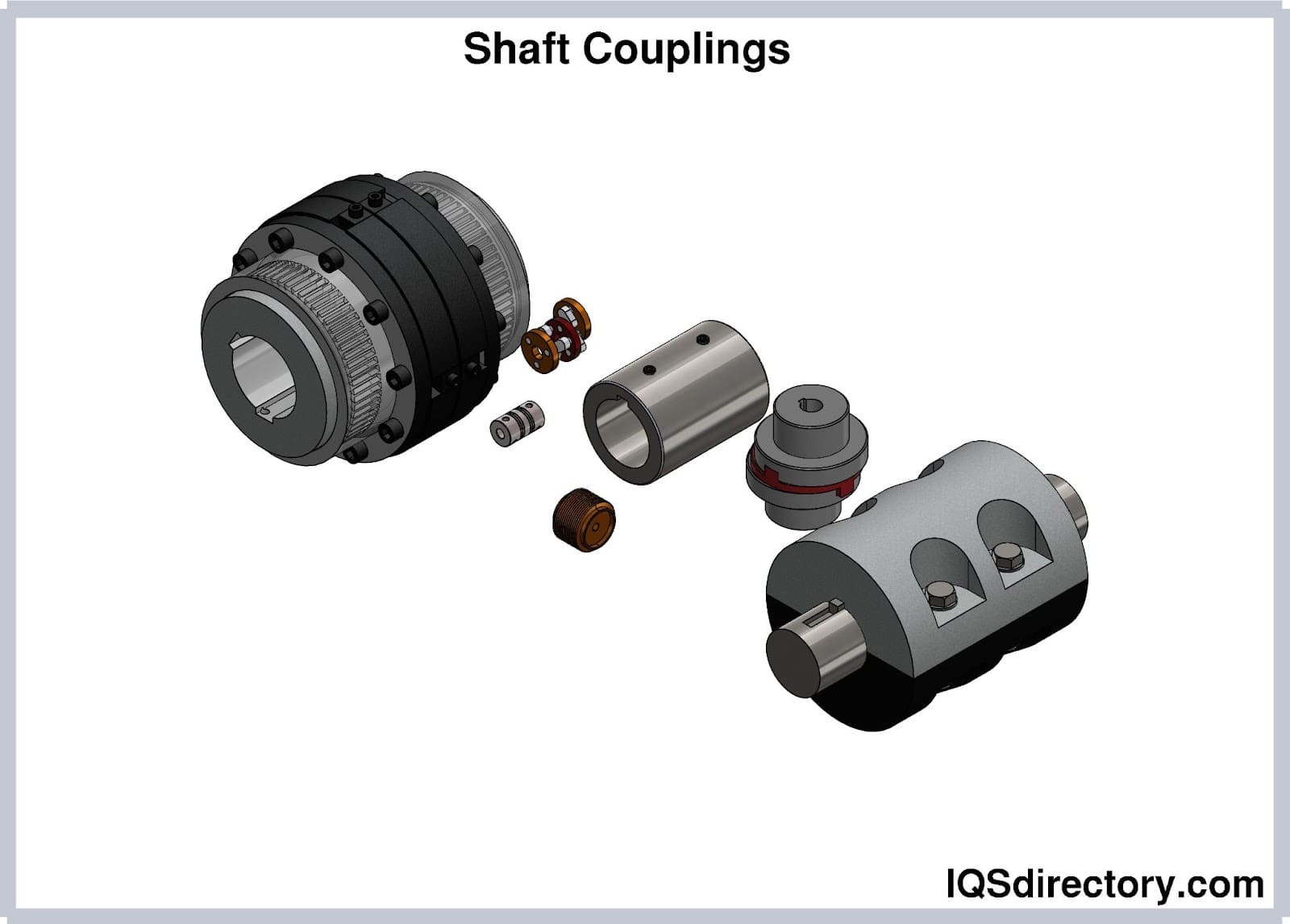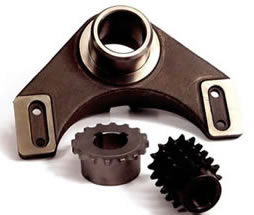When selecting a universal joint, the hub type, material composition and the applications for use are all important factors. Plastics are often used in the production of universal joints but steel is the most common. While plastics provide better rust and corrosion resistance and electrical and magnetic insulation, steel can handle more torque and higher temperatures. Gear couplings and universal joints are used in similar applications, most predominantly in the automobile industry.
While gear couplings have higher torque density, universal joints induce lower vibration than gear couplings. The lower torque density in a universal joint is due to the limited cross section of its cross and yoke. Other applications for universal joints include metalworking machinery, military applications, packaging systems, printing processes, medical equipment, automotive steering purposes, commercial sewing machines, food processing equipment, conveyors, cleaning equipment, surgical tables and many other applications.
All parts of a universal joint must work together properly in order for the entire device to operate effectively. One key aspect of universal joints is the drive pins. The main pin and bushing are designed for even strength and are usually ground from alloy steel. The main hub is generally available in a variety of configurations including bore, keyway, hex, square and threaded.
The cross pin keeps the assembly strong even while under stress and the central cube-shaped component that attaches the shafts is machined to minimize backlash as it provides smooth operation and control. There are two main kinds of universal joints: single joint and double joint. The single joint style has one bending joint, allowing it to function at up to a 45 degree angle. The double joint style can function at up to a 90 degree angle because it contains two bending joints.
There are other variations as well. The simplest universal joint is a Hooke joint which causes the output shaft to increase and decrease in speed twice for every one revolution of the input shaft. Other universal joints, or Cardan joints, can accommodate a large variation in the angles of the input and output shafts. As the angular difference increases, so does the speed fluctuation between them.






 Ball Bearings
Ball Bearings Ball Screws
Ball Screws Electric Motors
Electric Motors Friction Materials
Friction Materials Gears
Gears Quick Release Couplings
Quick Release Couplings Shaft Couplings
Shaft Couplings Speed Reducers
Speed Reducers Timing Belting
Timing Belting Castings & Forgings
Castings & Forgings Bulk Material Handling
Bulk Material Handling Electrical & Electronic Components
Electrical & Electronic Components Flow Instrumentation
Flow Instrumentation Hardware
Hardware Material Handling Equipment
Material Handling Equipment Metal Cutting Services
Metal Cutting Services Metal Forming Services
Metal Forming Services Metal Suppliers
Metal Suppliers Motion Control Products
Motion Control Products Plant & Facility Equipment
Plant & Facility Equipment Plant & Facility Supplies
Plant & Facility Supplies Plastic Molding Processes
Plastic Molding Processes Pumps & Valves
Pumps & Valves Recycling Equipment
Recycling Equipment Rubber Products & Services
Rubber Products & Services